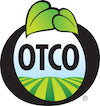There are Massive Floating Farms in the Works and They're Awesome

Architect Javier F. Ponce of Forward Thinking Architecture thinks he’s found a way to feed the world’s expanding population. It’s a farm that’s floating on a lake.
“After doing some research and watching documentaries about humanity’s future, I became interested in using my architectural knowledge and design in order to help improve the world,” Ponce told Vice. “One subject which caught my attention was food risk and the current trend of importing massive amounts of food from one place to another, causing huge environmental problems.”
The problems are many: from a global population expected to hit 9.6 billion by 2050 to limited water resources and climate change, food production is on a lot of scientists’ minds, and for good reason.
Ponce’s Smart Floating Farms (SFF) are “automated offshore multi-layer food and energy production platforms,” which could make it easier to bring food into areas with limited food (and water) production capacities.
The idea though, isn’t a new one. According to Ponce, floating farms have existed in previous civilizations, such as the Mayans and the agriculture of Chinampas. “Developed in ancient times by the 14th century, Aztecs had turned most of the Lake of Xochimilco into one big floating garden, which allowed them to support up to 230,000 people. Some Chinampas still exist today,” Vice explains.
Built atop freshwater lakes, the farms use vegetation and mud. “The wet environment allows for a cycle of decomposition and irrigation which fertilises the soil, creating a productive area for agriculture,” reports Vice.
“This is not science fiction. It is a serious and viable solution,” Ponce says. “It is not meant to ‘solve’ all of humanity’s hunger problems or to replace existing traditional agriculture; this is not the idea at all. The driver behind the project is to open a new initiative which can be complementary and compatible with other existing production methods in order to help reduce food risk associated problems in different areas of the globe.”
SFF would be able to use aquaculture, hydroponics and solar power to produce food 365 days a year, “regardless of water scarcity” says Vice, and according to Ponce’s estimates, one farm could produce an estimated annual yield of 8152 tons of vegetables and 1703 tons of fish.
Image via Forward Thinking Architecture
Leave a comment
Comments will be approved before showing up.


